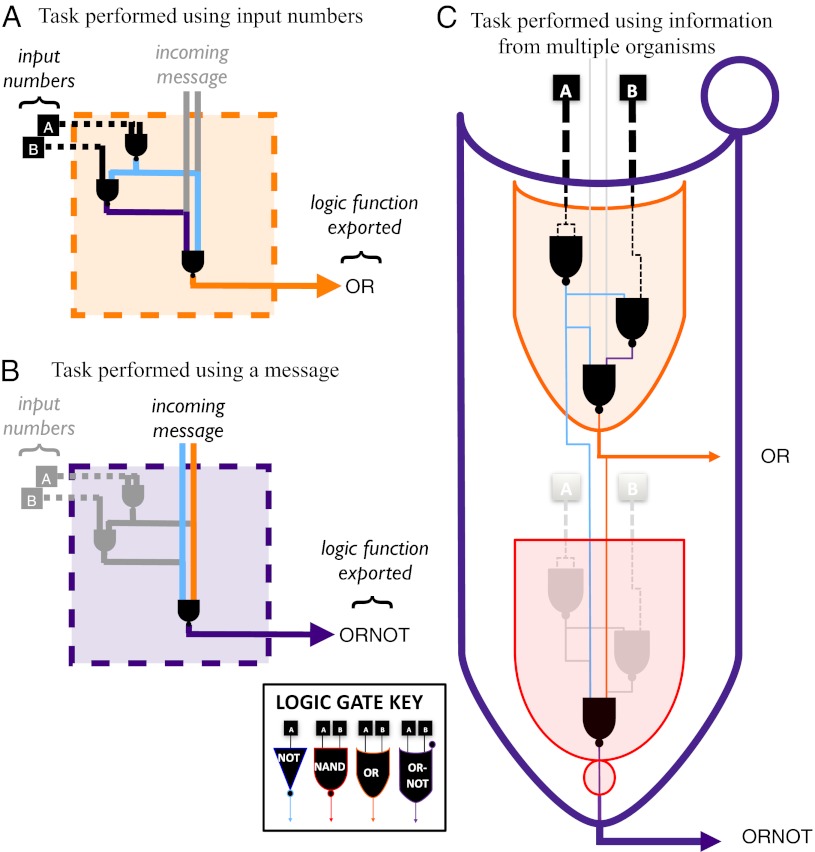Fig. 5.
Internal circuitry used by organisms in the case-study colony to export logic operations varies depending on whether they have successfully received a message. (A) An organism that exports operation OR on the input values. This individual does not receive a message (grayed-out lines) and processes inputs A and B through its logic circuitry of three NAND gates. Note {[(A NAND A)] NAND [(A NAND A) NAND B]} = (A OR B). Thus, this individual performs and then exports the OR task. (B) An organism that exports the results of an ORNOT operation using the contents of a received message. This organism performs the same initial steps as the organism depicted in A. However, it successfully receives a message that overwrites the partially processed input values. It NANDs together the received values to produce the result for ORNOT, which it exports. (C) A hierarchical perspective on how multiple organisms participate via messaging in performing a more-complex logic operation. Within this figure, we depict the same two organisms as in A and B. However, we vary their shape and color to represent the internal logic operations performed, rather than the task exported. The first organism highlighted in orange is the organism in part A. This individual ORs inputs A and B together and as such is represented by an OR gate. Additionally, it passes a message with two components to the second individual: (NOT A) and (A OR B). The second organism (from B) is highlighted in red and is represented by a NAND gate, because it receives the message (represented as blue and orange lines) sent by the first organism and performs a NAND operation on the components of the message. Because of the message contents, which were created by organism A, the resulting operation is (A ORNOT B), which is exported by the organism. Note that [(NOT A) NAND (A OR B)] = (A ORNOT B). Combined, these two individuals serve as an ORNOT gate, as depicted by the large purple gate surrounding the pair of individuals.

